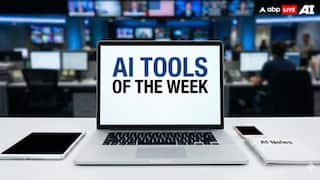Web3: How It Is The Future Of Internet And Why You Should Care
Web3 offers a decentralised form of the Internet, that will heavily reduce reliability of big tech firms.

Web3 — you may have already heard faint buzz around this and how it is poised to be the future of the Internet. But should you care? Well, if you don’t want your Internet monopolised by big tech, you should indeed sit up and take notice of Web3. Think of the current state of Internet as a USB flash drive that lets you read and write any data you want, but won’t let you own the drive itself. However, with Web3, you will not only be able to handle data as you want but also have certain ownership over it all. In this article, we will talk about everything Web3 — from our journey through the Web so far and how it is indeed the future that we need.
Web1 and Web2: The journey so far
Before we begin delving into Web3, let’s quickly discuss how the Web has developed so far.
Web1, or Web 1.0, was first formulated by British computer scientist Tim Berners-Lee at the European Organization for Nuclear Research, popularly known as CERN, in Geneva, Switzerland. Berners-Lee was looking to create open protocols which are decentralised that would allow anyone to share any information from anywhere on Earth.
Between 1990 and 2004, Web 1.0 slowly took shape, but it was primarily limited to a handful of companies owning it. Users almost never interacted between themselves and what might come as a shocking piece of information for Gen Alpha individuals, there were no “content creators” back then. So, Web1 was primarily used as a read-only platform.
Web2, or Web 2.0, is the current state of Internet that came about in 2004. From read-only, Web2 helped the Internet become read-write, where companies allowed users to start sharing their own content and also started allowing everyone to communicate within themselves.
However, while Web2 allowed users to post their own content, they would still be owned by the companies or platforms that would host them, and whatever revenue is generated from advertisements will be solely owned by the companies. As per Ethereum.org, “While users could create content, they didn't own it or benefit from its monetisation.”
Web3: What is it? Who first coined the term?
Now, we come to Web3 or Web 3.0. From read-only and read-write Web, this modern iteration of the Internet brings about a read-write-own format. Here, the Internet is no longer monopolised by a handful of companies, but it has a decentralised nature.
The term “Web3” was first coined by Ethereum co-founder Gavin Wood just after the Ethereum network was launched in 2014, to offer early users a way to use the Internet without having to rely too much on a select few companies — a similar concept upon which cryptocurrencies are based on.
Web3 uses blockchains and token-based economics (cryptocurrencies and NFTs) to offer a truly decentralised form of Internet to users. A blockchain is a digital ledger that is operated by hundreds of users around the world to keep track of data (or “blocks”) to offer transparency and decentralisation. Web3 also allows users to monetise their content, helping the overall Internet switch over from a monopolistic entity to a for-all platform.
To clarify, some elements of Web3, like user-content monetisation have already been put into place. So, rather than considering Web3 to be the future, it’s safe to say that the future is already here and Web3 will attain its full shape in the coming years as more elements fall into place.
Web3: Core principles
As per Ethereum.org, Web3 needs to have four core principles — it should be decentralised, permissionless, trustless, and allow native payments.
The decentralised nature of Web3 ensures distribution of ownership of the Internet amongst builders and users. The permissionless nature will ensure that everyone has equal access to participate. The trustless aspect uses incentives and economic mechanisms (much like how the Ethereum network and all crypto chains usuall work) rather than solely relying on third-party operators. And lastly, the native payments feature will allow use of crypto for payments and money transfers instead of relying on traditional payment processors, making it considerably safer from cyberattacks on institutions.
Web3: Limitations
For all the advantages Web3 offers, there are certain limitations as well.
Access to some Web3 features currently need relatively high cost of transactions, which makes it harder for users in developing nations to access and experience Web3 fully.
While Web3 offers ownership, it also means this version of Internet will need a little bit of learning first. Let’s put things into perspective. When you first used Facebook, or even YouTube for that matter, it took some time for you to learn the ropes and today, you use these two apps without a hitch — simply because you have gotten a hang of it. As is the case with any new technology out there, it takes a bit of repeated use to get used to the interface. Web3 interfaces right now may appear a little less intuitive, but with more usage, users are sure to get more proficient.
As per Ethereum.org, given the nascent nature of Web3, its ecosystem “currently depends mainly on centralised infrastructure (GitHub, Twitter, Discord, etc.). Many Web3 companies are rushing to fill these gaps, but building high-quality, reliable infrastructure takes time.”
So, why should you care about Web3?
Given the current hurdles users face owing to data privacy and big tech controlling how you consume the Internet, Web3 does appear to be a step in the right direction, promising greater data security, scalability, privacy, and more ways for users to monetise their content, without heavily relying on big tech firms.
Related Video
Apple creates a new record in iPhone sales after launch of iPhone 16 | ABP Paisa Live






































